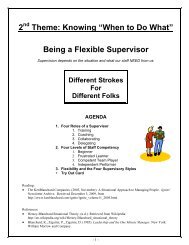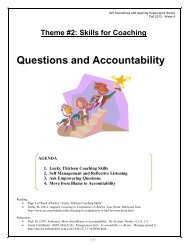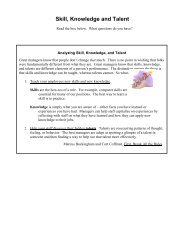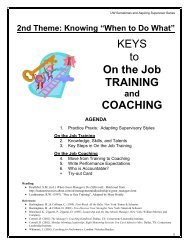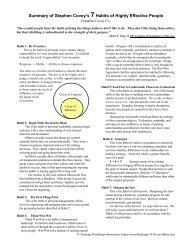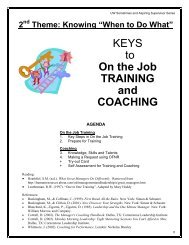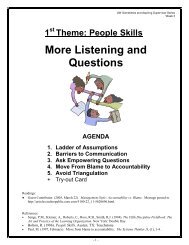Introduction to Integral Theory and Practice IOS Basic and the AQAL ...
Introduction to Integral Theory and Practice IOS Basic and the AQAL ...
Introduction to Integral Theory and Practice IOS Basic and the AQAL ...
Create successful ePaper yourself
Turn your PDF publications into a flip-book with our unique Google optimized e-Paper software.
cultivation of body, mind, <strong>and</strong> spirit in self, culture, <strong>and</strong> nature. The simplest<br />
version of this is shown in figure 6, <strong>and</strong> if you have a general underst<strong>and</strong>ing of that<br />
diagram, <strong>the</strong> rest is fairly easy.<br />
<strong>IOS</strong> Apps<br />
Let’s conclude this <strong>Introduction</strong> <strong>to</strong> <strong>IOS</strong> <strong>Basic</strong> by giving a few quick examples of its<br />
application or “apps.”<br />
<strong>Integral</strong> Medicine<br />
Nowhere is <strong>the</strong> <strong>Integral</strong> Model more immediately applicable than in medicine,<br />
<strong>and</strong> it is being increasingly adopted by health care facilities around <strong>the</strong> world. A<br />
quick trip through <strong>the</strong> quadrants will show why an integral model can be helpful.<br />
Orthodox or conventional medicine is a classic Upper-Right quadrant<br />
approach. It deals almost entirely with <strong>the</strong> physical organism using physical<br />
interventions: surgery, drugs, medication, <strong>and</strong> behavioral modification. Orthodox<br />
medicine believes essentially in <strong>the</strong> physical causes of physical illness, <strong>and</strong><br />
<strong>the</strong>refore prescribes mostly physical interventions. But <strong>the</strong> <strong>Integral</strong> Model claims<br />
that every physical event (UR) has at least four dimensions (<strong>the</strong> quadrants), <strong>and</strong><br />
thus even physical illness must be looked at from all four quadrants (not <strong>to</strong><br />
mention levels, which we will address later). The integral model does not claim<br />
<strong>the</strong> Upper-Right quadrant is not important, only that it is, as it were, only onefourth<br />
of <strong>the</strong> s<strong>to</strong>ry.<br />
The recent explosion of interest in alternative care—not <strong>to</strong> mention such<br />
disciplines as psychoneuroimmunology—has made it quite clear that <strong>the</strong> person’s<br />
interior states (<strong>the</strong>ir emotions, psychological attitude, imagery, <strong>and</strong> intentions) play<br />
a crucial role in both <strong>the</strong> cause <strong>and</strong> <strong>the</strong> cure of even physical illness. In o<strong>the</strong>r<br />
words, <strong>the</strong> Upper-Left quadrant is a key ingredient in any comprehensive medical<br />
<strong>Introduction</strong> <strong>to</strong> <strong>Integral</strong> <strong>Theory</strong> <strong>and</strong> <strong>Practice</strong>. Page 34



